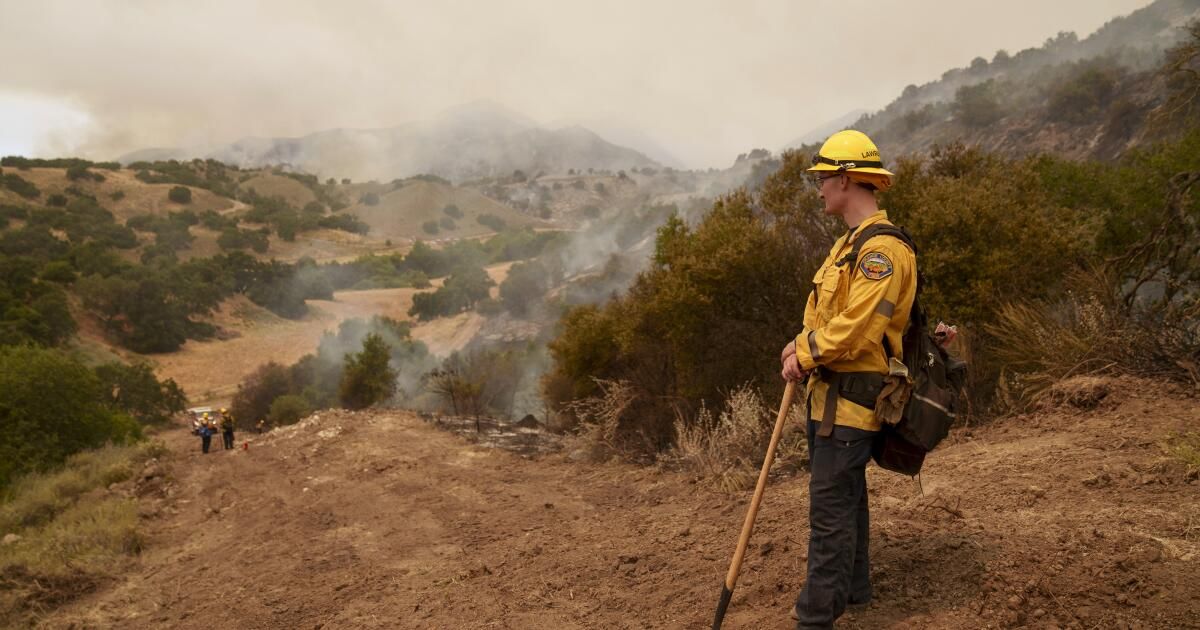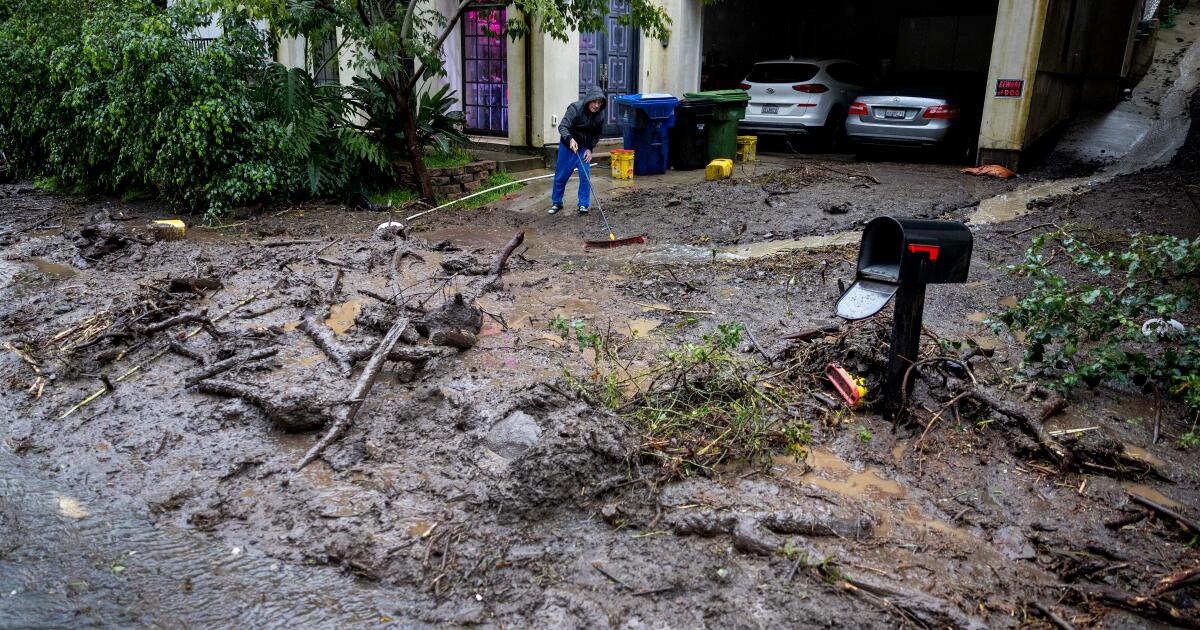A wildfire that broke out near Oroville last week amid California's record-breaking heat wave destroyed 13 homes and more than a dozen other buildings, state fire officials said.
The Thompson Fire arrived Friday in sync with a heat wave sweeping across the West, setting the stage for the fire to hold on to brush and vegetation amid extreme heat and dry winds in Butte County. Over the weekend, it grew to 3,789 acres before the California Department of Forestry and Fire Protection declared it 100% contained Monday.
“The word our fire chief has been using to describe the fire is tenacious,” said Cal Fire spokesman Rick Carhart. “The fire broke out on an extremely hot, fairly windy day with almost zero humidity.”
The fire was fanned by 20 mph northerly winds and burned on steep terrain, testing firefighters battling the flames.
According to Cal Fire, 13 single-family homes were destroyed, five homes were damaged and 13 other buildings were also destroyed. Two firefighters were injured, Carhart said. There have been no reports of civilian injuries.
Although the Thompson Fire is contained, the persistent heat wave is setting the stage for drier conditions with extreme heat that could spark more fast-spreading wildfires and strain resources to fight them. Temperatures on Tuesday remained 10 to 15 degrees above average across large swaths of the state and show no signs of abating through the weekend.
“That prolonged heat really makes a big difference in stressing vegetation and especially firefighters,” said meteorologist Alex Tardy of the National Weather Service in San Diego.
Among other fires in the state, the Vista Fire in the San Bernardino National Forest is burning steep terrain near Mt. Baldy and Wrightwood, the U.S. Forest Service said.
The fire nearly doubled in size overnight and has burned 1,095 acres since it began Sunday afternoon in remote, steep terrain. Details on the fire's containment were not immediately available.
According to the National Weather Service, temperatures in the vicinity of the Mt. Baldy fire, which sits at about 7,000 feet in elevation, will reach 90 degrees on Tuesday. Firefighters can also expect notable wind gusts, but they should follow a predictable pattern, increasing during the day and decreasing at night, Tardy said.
The area is now full of vegetation due to the heat it has suffered after a heavy rainy season.
“That area near Lytle Creek is the wettest part of the mountain and has a lot of vegetation,” Tardy said. “That means there are already a lot of fuels there.”
The severity and persistence of this heat wave is unprecedented, meteorologists say, and several high temperature records have been set in the Golden State and the western United States.
Lancaster and Palmdale continued to extend their all-time record for consecutive days with temperatures of 110 degrees or higher, reaching five days on Monday, according to the National Weather Service. The previous record for both Antelope Valley cities was three days.
Las Vegas is expected to break its all-time record for consecutive days of 110 degrees or higher, hitting five days in a row on Monday. The current record is 10 days in a row, but forecasts indicate temperatures will stay that way through next week, easily surpassing the previous record.
According to the National Weather Service, several other areas, including Madera and Needles, also hit their record highs on Monday. Palmdale hit 112 degrees on Monday, recording an above-normal temperature for the fourth day in a row.
Madera hit 110 degrees, breaking a record by three degrees; Merced hit 109 degrees, slightly beating its daily record from 1921; Las Vegas hit 115 degrees, one degree above its previous July 8 record set in 2021; and Needles in the Mojave Desert hit 123 degrees, beating its July 8, 2017 record by three degrees.
In Santa Barbara County, a wildfire forced residents near Figueroa Mountain to flee their homes as authorities issued evacuation orders Monday.
The Lake Fire continues to burn on the western edge of the Los Padres National Forest amid record levels of moisture, according to the U.S. Forest Service. The fire was first reported Friday afternoon northeast of the town of Los Olivos and has since burned 26,176 acres to become the largest fire in California so far this year, officials said.
The fire is burning near Zaca Lake and several residential properties, including Sycamore Valley Ranch, formerly Michael Jackson's Neverland Ranch. Fire officials reported the blaze was 12% contained as of Tuesday morning.
On Monday, officials announced that evacuations have been ordered for portions of Figueroa Mountain, south of the Tunnel House on the Sisquoc River, east of Figueroa Creek, north of the south end of Cachuma Mountain and west of areas of the Los Padres National Forest. While most of the fire’s overnight growth occurred in isolated areas of the forest, evacuation warnings were issued Tuesday on the border of the communities of Los Olivos and Santa Ynez and evacuation orders were expanded to Goat Rock, east of Figueroa Creek, north of the U.S. Forest Service entrance on Happy Canyon Road and south of Cachuma Mountain.
The National Weather Service issued a red flag warning for the area Tuesday afternoon due to high winds and extreme heat.
“It's hot, dry and there are stronger winds today,” said Dan Michael, a fire behavior analyst intern with the Interagency Incident Management team that responded to the fire.
Even at night, when fire activity typically slows, the Lake Fire has remained active because it is burning on top of mountain ridges, where temperatures can be 30 degrees warmer or more than at lower elevations, Michael said.
“The marine layer infiltrates and doesn’t get to where the fire is burning,” Michael said. “Conditions are much worse at night.”
Los Angeles Times reporter Grace Toohey contributed to this story.












